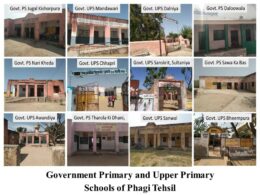- Spatial data has become indispensable for numerous aspects of urban development, planning and management.
- The increasing importance of remote sensing and GIS has been due to recent strides in acquiring spatial information (especially satellite Images and positioning), management (utilizing geographic information systems and geo-spatial database tools) and access (witness the growth in web mapping services), as well as the development of analytical techniques such ashigh resolution mapping of urban environments.
- These more efficient techniques can lead to a wider diversity of information that is more up-to-date.
- In some circumstances, a wealth of existing map, image and measurement data can already be found in areas such as land administration, natural resource management, marine administration, transportation, defense, communications, utility services and statistical collections.
- The challenge is for users both within and outside these areas of activity to break down the information silos and to discover, to access and to use the shared information to improve decision-making, business outcomes and customer services.
- Proximity to road,
- Proximity to existing urban area,
- Proximity to lake view etc.


Thanks for sharing the best information and suggestions, If you are looking for the best Land capability Assessment Gippsland, then The 4 Spheres. Highly energetic blog, I’d love to find out some additional information.
first off, a hearty thanks to you. Your blog is awesome and completely knowledgeable and I completely satisfied with the reading. Keep your work spread till long after. For more House Versus Condo related information visit The Shoreline Condominium.Certainly, you are Right!
Thanks for such a pleasant post. This post loaded with lots of useful information. Keep it up. If you are looking for the best information and suggestions related to Match Win Prediction then visit Crowdwisdom360 Private Limited
Gis has many applications
Cool application